Previous Newsletters
|
||||
|
MILESTONES & YARDSTICKS - MEASURING SUCCESS
In the land of non-profits massive amounts of time and energy are devoted to finding an audience, developing and engaging them and then proving that you did it. We’ve never met a funder whose heart wasn’t warmed by exponentially multiplying metrics documenting interactions both real and phantom. With the advent of social media, impacts have transcended actual attendance, snowballing into a dizzying cornucopia of hits, tweets and likes. We do confess to having a tendency to be slightly optimistic and creative about the amount of people measurably touched by our activities. Indeed, we suspect we are not alone as we wonder who the 52 million viewers (or 1/6 of the people in America) of a YouTube video that we never heard of are. While many funders may consider the amount of eyeballs an appropriate yardstick to measure success, it isn’t the only one. You could look at longevity. Believe it or not, this month marks our tenth anniversary. On January 17, 2002 we printed 100,000 copies of our first map, DowntownNOW. Our former officemates were justifiably taken aback when all 240 boxes arrived and we tackled the challenge of finding good homes for them with gusto, only to have the situation serially repeat itself whenever it was time to update. In our efforts to impress ourselves upon the good granters of New York, we printed and distributed something like 650,000 maps. We suspect that many of them found their way into landfills, but were touched every time we would find a map decorating a wall, sometimes in an unlikely office and sometimes at City Planning. A healthy portion of our maps went to the Municipal Art Society to become the working document for Imagine New York, their outreach effort for community based planning in the wake of 9/11. They have gone on to imagine other parts of the city including Flatbush and Coney Island. This weekend we will be joining MAS again on Saturday to participate in a panel on mapping. On the Road to Resilience: From the Ground Up which will focus on developing a citywide conversation about making New York a more resilient place to live. We think that being invited back after a decade to join in the dialog might be a really good indicator of success. Another measurement of success might be the amount and calibre of organizations who want to partner with us and to share their collections with us. This month we will celebrate the city of Memphis, which has the distinction of being our newest collection. Another measurement might also be the size of our collection. So, we thought it would be time to explore the artist with the largest amount of work in our database, Unknown. For architects, we selected someone who represents our roots, Daniel Libeskind, whose architectural practice was redefined in the wake of 9/11 ten years ago. Woody Allen once said that 'Showing up is 80 percent of life". We couldn't agree more. Abby Suckle, President | ||||
|
FEATURED ART COLLECTION: MEMPHIS, TN As we were posting our newest collection, Memphis and getting to know the city (artistically) we noticed many of the artworks recently commissioned turned out to be of metal and explored the effects of transparency. We've never built an issue around a material before. Often these sculptures reinterpret forms found in the landscape, such as Timothy Upham's Family Trees or Nancy Cheair's Summer in the children's section of the Main Library. Some of the most interesting and unusual metal pieces are actually gateways and screens that often cover or reinvent infrastructural elements in the city. Take for example, Jill Turman’s Cooper-Young Trestle which marks the portal to one of the city’s most artistic and ‘hip’ neighborhoods named, not surprisingly after the intersection of Cooper and Young Streets. The houses placed on the former trestle are based on actual neighborhood buildings. Or look at Greely Myatt’s Quiltsurround which uses recycled street signs to create one iof the cleverest and most interesting mechanical equipment screens we have ever seen on the southwest corner of City Hall. In addition to traditional artworks, Memphis ,like many other cities around the country, has been incorporating public art into its outdoor public spaces such as the transit line. Here are a few highlights along the historic Madison Avenue Trolley line and the 'I Love Memphis' Mural program. |
||||
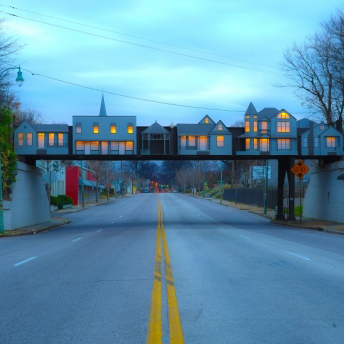
Cooper-Young Trestle (2000) Jill Turman
Photo courtesy of UrbanArt Commission |

Summer (1998) Nancy Cheairs
Photo courtesy of UrbanArt Commission |
|||
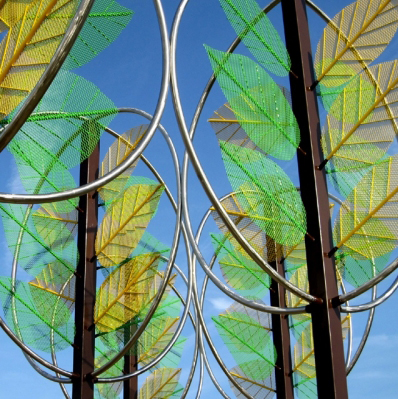
Family Trees (2012) Tim Upham
Photo courtesy of UrbanArt Commission |
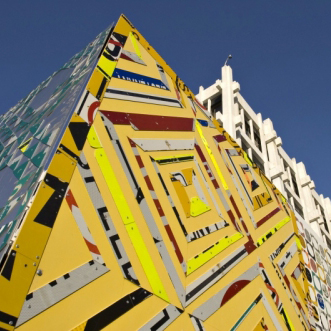
Quiltsurround (2009) Greely Myatt
Photo courtesy of UrbanArt Commission |
Featured Sites: MEMPHIS, TN
Featured Site:Upcoming Event: COCKTAILS & CONVERSATIONS 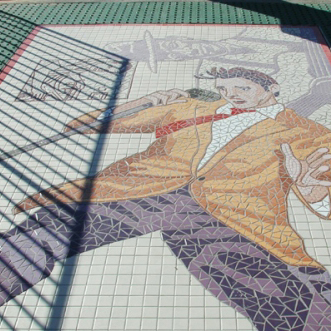 Madison Avenue Trolley - Orleans Station
Madison Avenue Trolley - Orleans StationArtists: Helen Baber, Lea Holland, Cythia Metcalf, Jeanne Seagle
Photo courtesy of the UrbanArt Commission
Featured Site:  Madison Avenue Trolley - Third Avenue Station
Madison Avenue Trolley - Third Avenue StationArtists: Cythia Metcalf, Jeanne Seagle
Photo courtesy of the UrbanArt Commission
Featured Site: 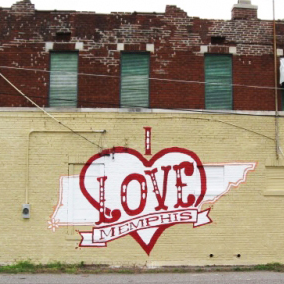 I Love Memphis Mural - Vance/Allen
I Love Memphis Mural - Vance/AllenArtist: Matt Ladner
Photo courtesy of the UrbanArt Commission
FEATURED EVENT: 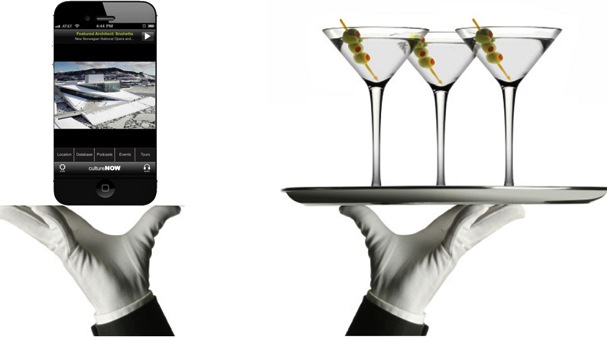 Cocktails & Conversations
Cocktails & ConversationsDialogs on design with custom cocktails. The Pairing: William Menking, Editor, Architects Newspaper Craig Dykers, Snøhetta Toby Cecchini: Bartender Join us on Friday January 11 at the Center for Architecture at 6:30-8:30 for our 2nd evening. INTERESTING FIND 
|
||
|
FEATURED ARTIST: UNKNOWN We have developed an exceptionally robust collection of artworks we know little or nothing about. Added to the thousands of photos that we’ve taken of works that intrigued us wherever we found them, are a healthy collection of portraits of former civic leaders, fountains, plaques, and murals that grace our civic spaces and have moved off the radar screen. Fashions change, artists come in and out of style, pieces get moved, are poorly maintained, or recede into the background. We try diligently to find out about all the pieces in our collection, but it can be a losing battle. Since none of these pieces are actually orphaned, we thought we’d share them with our digital audience in the off-chance that someone else might be able to enlighten us about their provenance. |
||||
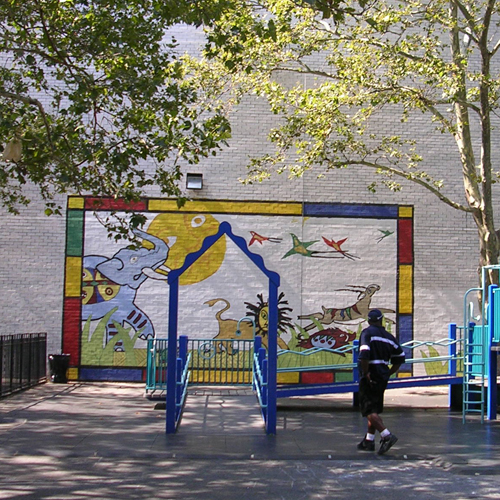
African Animals, Unknown
New York, NY |
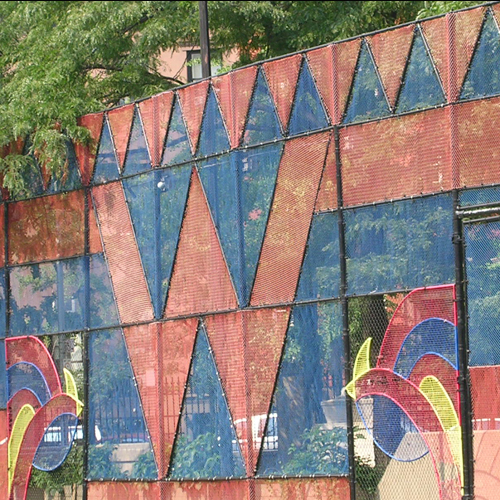
Fence Mural, Unknown
New York, NY |
|||
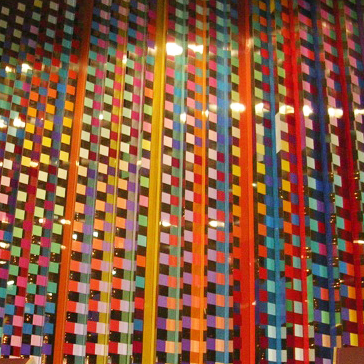
Metallic Sculpture
Unknown New York, NY |
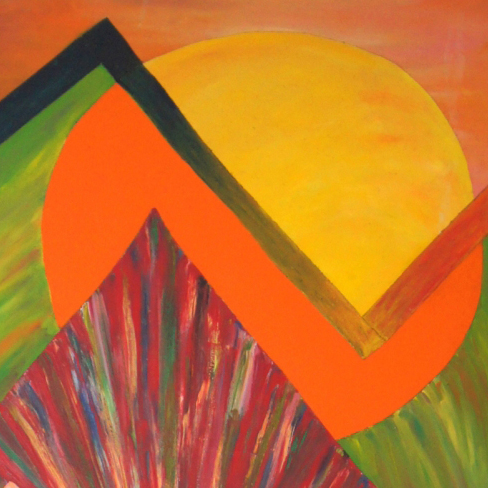
Untitled (Abstract 3) Unknown, New Haven
Photo courtesy of Department of Cultural Affairs/ City of New Haven
|
|||
|
FEATURED ARCHITECT: STUDIO DANIEL LIBESKIND Adding a new building to any existing building, especially a much-loved cultural institution such as a museum is always a challenge for any architect. Every step of the building process from commission through construction is magnified under a very public lens which plays out almost daily in the press. Post Bilbao, architects are hired to design an icon while needing to skillfully knit a new and updated expansion into an existing historic structure which always needs to be updated functionally and technically. Daniel Libeskind has had the unique opportunity to explore museum architecture in a historic context beginning with the Jewish Museum in Berlin completed in 2001. Here are four of his recent museum additions. |
||||
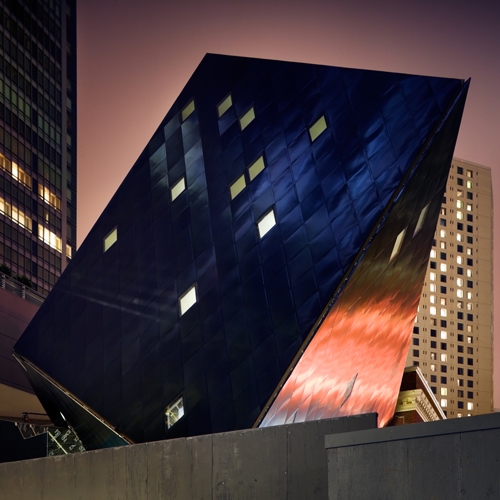
Contemporary Jewish Museum, San Francisco, CA (2008)
Photo © Bitter Bredt |
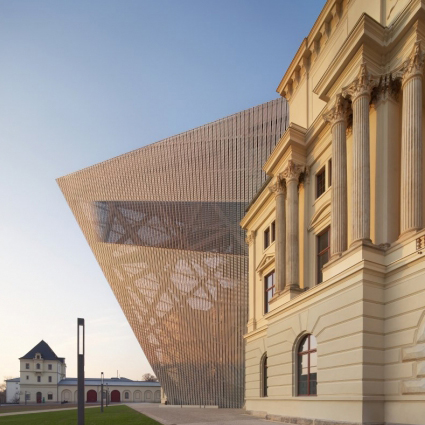
Military History Museum, Dresden, Germany (2011)
Photo © Hufton + Crow |
|||
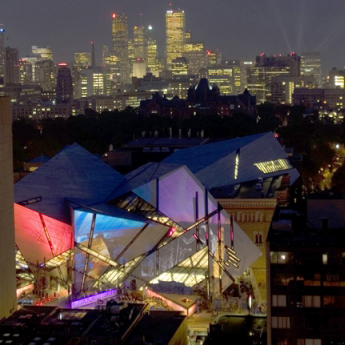
Royal Ontario Museum Extension, Toronto (2007)
Photo Courtesy of the Royal Ontario Museum |
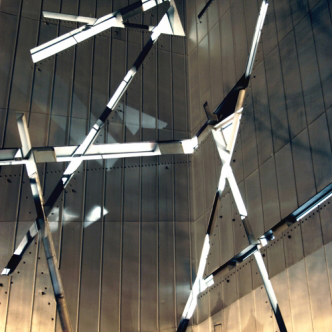
Jewish Museum Berlin (2001) Berlin, Germany
Photo © Michele Nastasi |
|||

